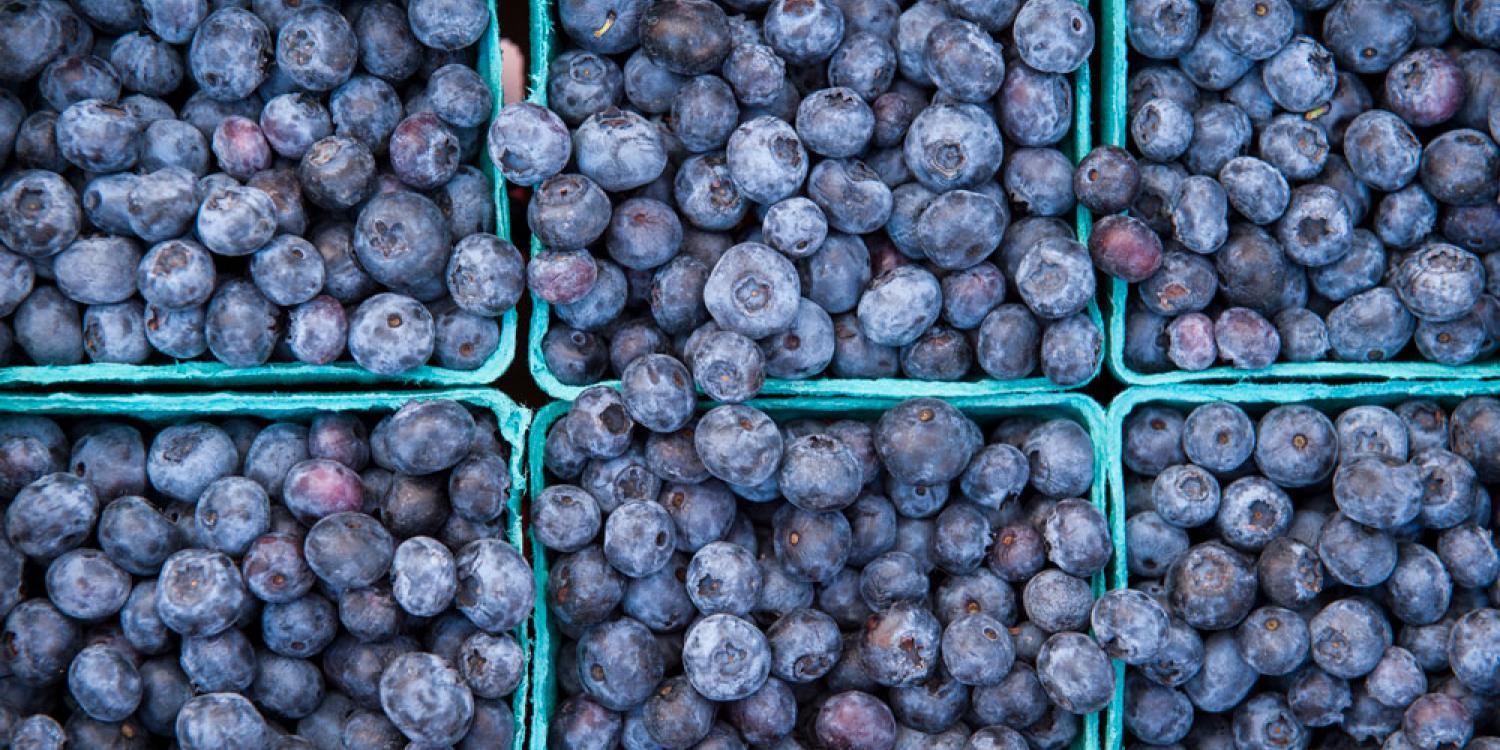
Oregon and Washington produce more blueberries than anywhere in the world. Oregon harvests 150 million pounds annually, which pencils out to be more than $120 million in farm gate value. When laborers work on large farms, they can hand-harvest at a rate of 50-85 cents per pound of high-quality blueberries for the fresh market – or about $12,000 an acre.
New harvesting technology developed by Wei Qiang Yang, associate professor and berry agent for Oregon State University Extension Service, could reduce the average cost of harvesting fresh blueberries to $3,000 an acre.
“This is a huge step forward for the industry,” said Yang, who is based at OSU's North Willamette Research and Extension Center in Aurora. “It’s a breakthrough for moving away from hand labor to machine harvesting fresh blueberries. There’s nothing else like it.”
Called a soft catch system, the mechanism boasts a soft surface for catching the delicate berries in contrast to the hard polycarbonate surface of traditional over-the-row machines (OTR), which have been used to harvest blueberries for processing – not fresh market – for 30 years. At $250,000, Yang’s machine is only affordable for large growers, but the system could be retrofitted for older OTR harvesters.
Most machine-harvested blueberries go to processors to be made into jams and other products. A fresh-market crop, however, needs gentle handling to keep berries from bruising. Yang’s invention catches the fruit, so the berries are in good shape for shipping to stores. In addition to a pleasing taste, blueberries are known as a “super food” with many health benefits.
Yang works closely with Willamette Valley growers, recognized the high cost of hand-harvesting blueberries. Competition with the nursery and housing industries and a lack of workers generally means fewer workers, leading to fewer berries picked during harvest.
Of the four soft catch prototypes that have been made, three were obtained by Oregon growers for on-farm trials. Others have been manufactured by the OTR harvester companies as an attachment for the OTR harvesters. Yang continues to fine tune the soft catch system, most importantly making the surfaces easier to clean and disinfect than traditional OTR machines.